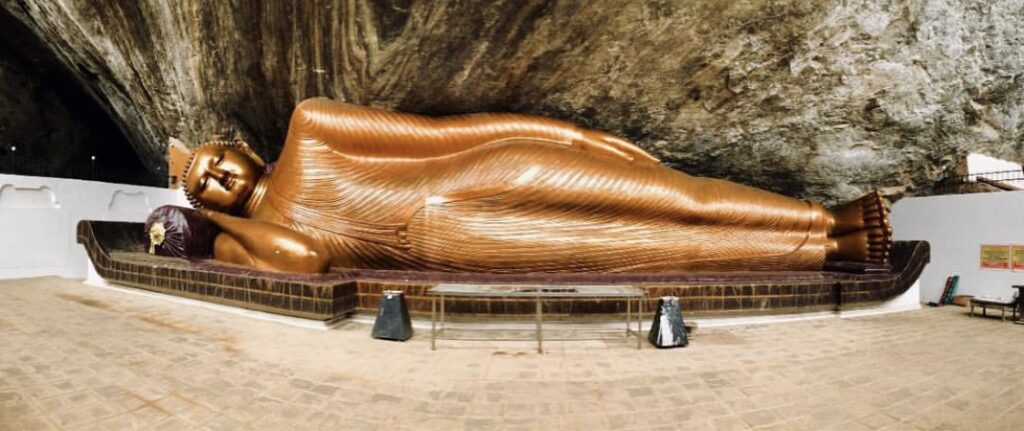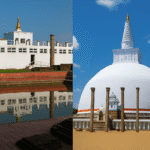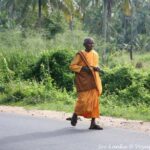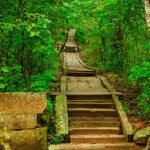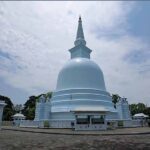Rethinking the Journey of the Chinese Monk Based on Geography, Textual Clues, and Overlooked Evidence
For centuries, scholars have believed that the 5th-century Chinese monk Faxian spent the majority of his pilgrimage in India, with a brief two-year stay in Sri Lanka. But what if this widely accepted narrative is incomplete—or even incorrect? Recent research, including that of Dr. Subashini Kindelpitiya, suggests that many of Faxian’s travel descriptions actually align more closely with the geography, religious landmarks, and cultural history of Sri Lanka. Could it be that Faxian’s “India” was, in fact, Lanka?
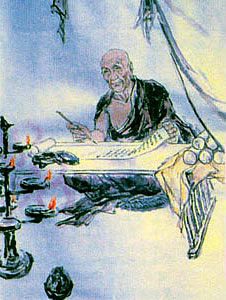
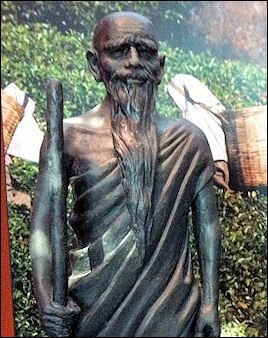
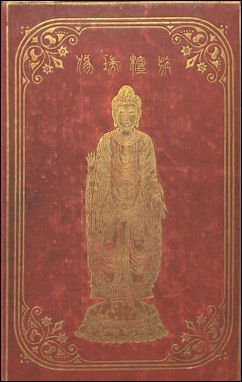
Disclaimer: Image sourced via Google Images. All rights belong to the respective copyright holders. If you are the owner of this image and would like it removed or properly credited, please contact us.
1. The Traditional Timeline — A Misleading Oversimplification It is commonly stated that Faxian spent “10 years in India” and only “2 years in Sri Lanka.” This claim, however, is based more on modern summaries than on Faxian’s own writings. A closer examination reveals several contradictions:
- The term “India” in Faxian’s records referred broadly to Buddhist regions (often including parts of Sri Lanka), not a political boundary.
- His own writings provide more detailed and spiritually rich descriptions of his time in Sri Lanka than in many Indian locations.
- The timeline from his departure in 399 CE to return in 414 CE makes it unlikely that he spent a full 10 years only in India.
Quote from Faxian: “The kingdom of Sinhala is in the midst of the great sea, and the circuit of it is about 7000 li. The king is a man of ability, and governs the kingdom with justice. The country is rich and prosperous, with a population of several millions. The people esteem virtue, and delight in works of merit.”
Source: A Record of the Buddhist Kingdoms, translated by James Legge, 1886. Chapter XXXVIII: Ceylon. (Internet Archive)
Also: “Fa-Hien stayed here for two years, learning the Vinaya of the Mahīśāsaka school, and copying out the Sutras.”
These passages suggest not only a long and fruitful stay in Sri Lanka, but also deeper engagement with monastic education and textual preservation than mentioned for most Indian regions.
2. Damadiva — An Island, Not a Subcontinent Many Buddhist texts describe Damadiva as being surrounded by the sea. Dr. Subashini emphasizes:
- India is not entirely surrounded by water.
- Sri Lanka is.
Faxian explicitly states he “crossed the sea to reach Damadiva” — a detail that matches Sri Lanka, not India.
Interpretation: If Faxian had been traveling within the Indian subcontinent, there would have been no need to cross the sea.
3. The Girihandu Seya Connection — Buddha’s Hair Relic Stupa Faxian describes a sacred stupa housing a hair relic of the Buddha, located near the sea and atop a hill.
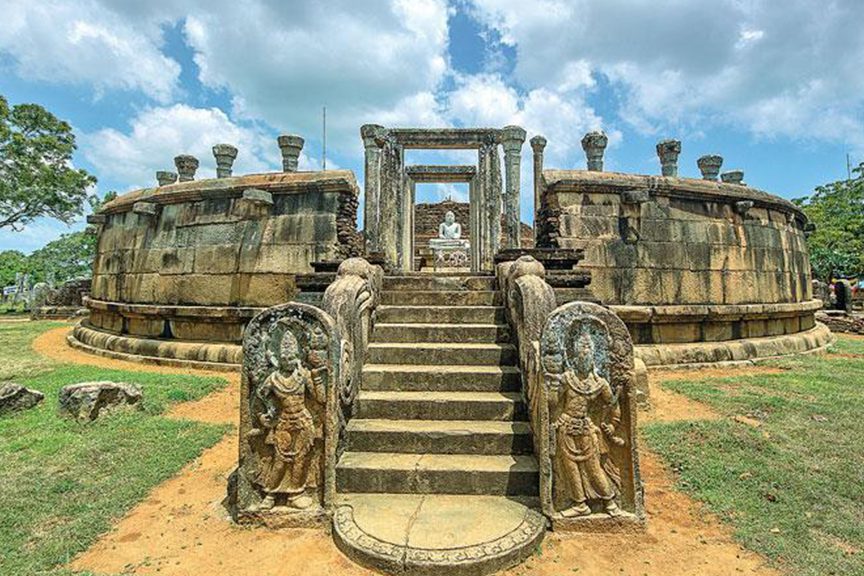
Disclaimer: Image sourced via Google Images. All rights belong to the respective copyright holders. If you are the owner of this image and would like it removed or properly credited, please contact us.
- In Sri Lanka, Thiriyaya (Girihandu Seya) matches this description exactly.
- No such matching site exists in mainland India.
Cultural Note: Local legend says two merchants, Tapussa and Bhalluka, built Girihandu Seya to enshrine Buddha’s hair relics — aligning directly with Faxian’s report.
4. Pachina Kanda Rajiniya & the Sea to the North Faxian writes about a sea to the north of a particular mountain — a geographic impossibility for most Indian regions.
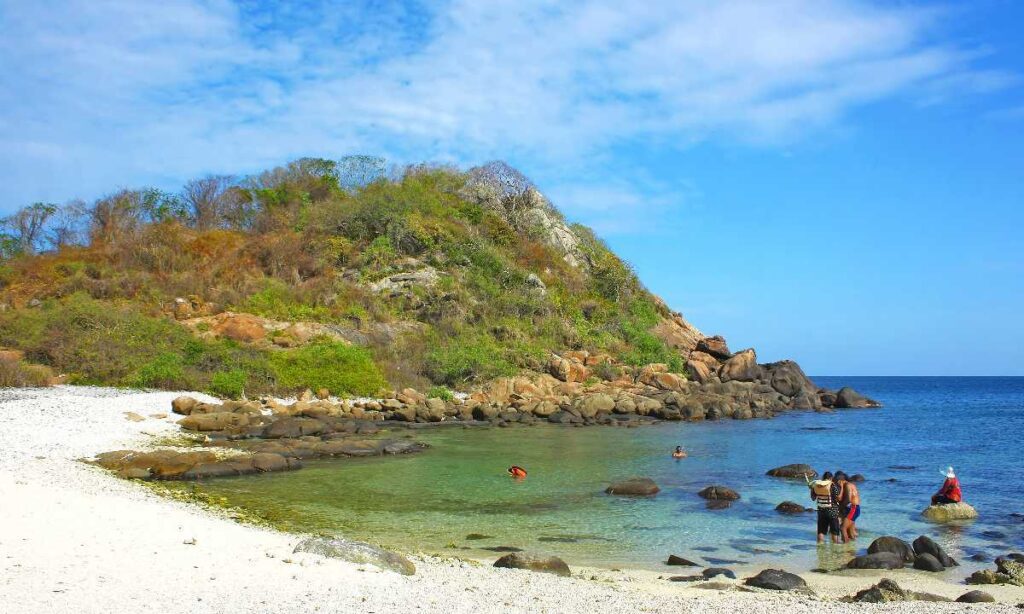
Disclaimer: Image sourced via Google Images. All rights belong to the respective copyright holders. If you are the owner of this image and would like it removed or properly credited, please contact us.
- In Sri Lanka’s Trincomalee region, the Pachina Kanda (Eastern Mountain) lies just south of the sea — perfectly matching the description.
5. Tooth Relic Ceremonies in Nine Sangaramas (Monasteries) Faxian reports witnessing a sacred ceremony of the Buddha’s tooth relic being carried among nine monasteries.
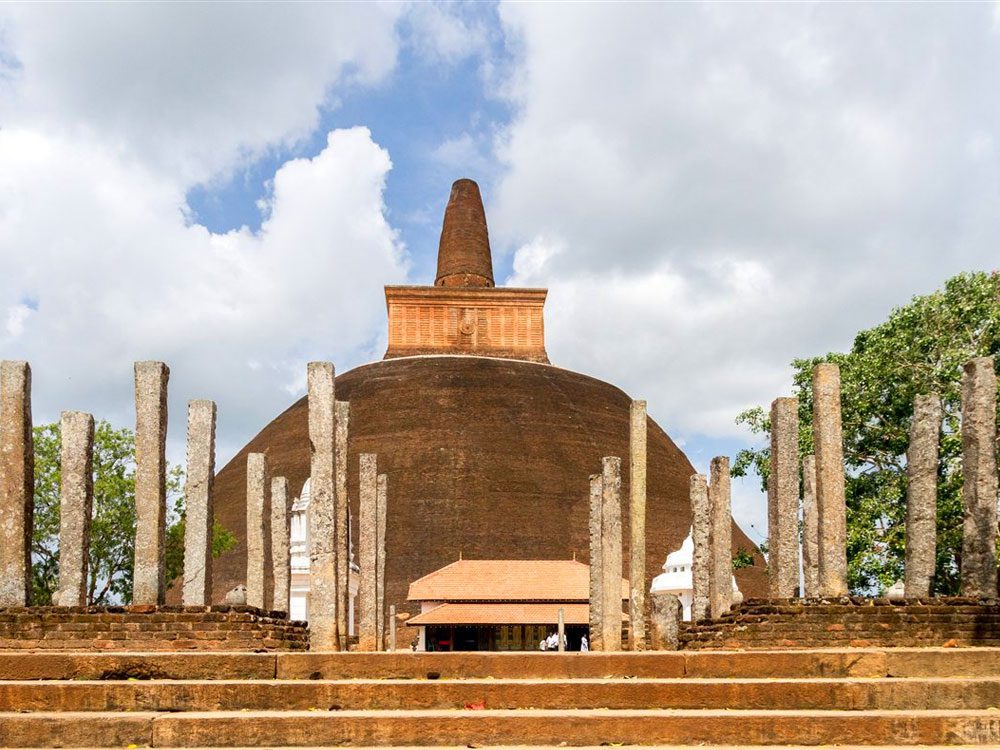
Disclaimer: Image sourced via Google Images. All rights belong to the respective copyright holders. If you are the owner of this image and would like it removed or properly credited, please contact us.
- This description does not match India, where no such ceremonies were held.
- It does match Sri Lanka’s Abhayagiri tradition and other early monastic complexes that revered the tooth relic.
Historical Note: The tooth relic in Sri Lanka has been venerated for centuries, with major processions held in Anuradhapura and later Kandy.
6. Sembu Male Sangaramaya — The Copper-Colored Monastery Faxian speaks of a monastery located on a copper-colored mountain.
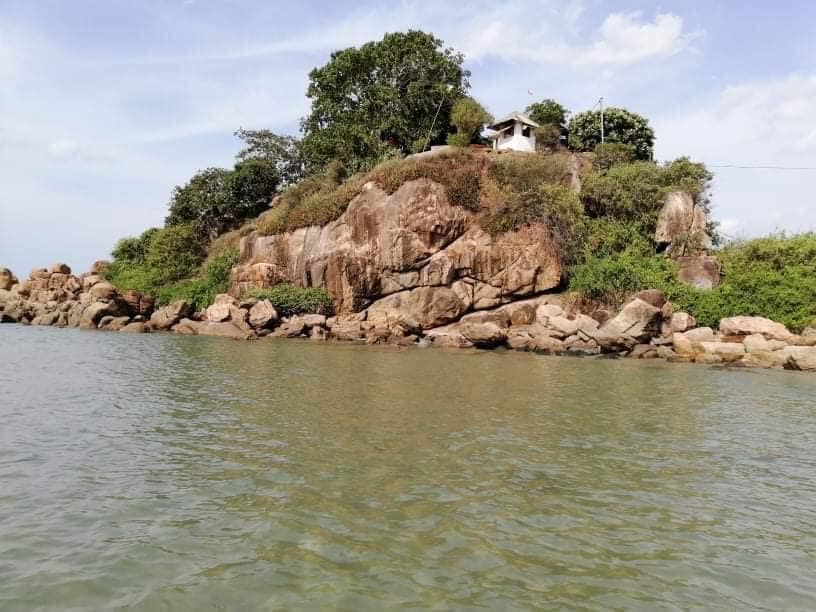
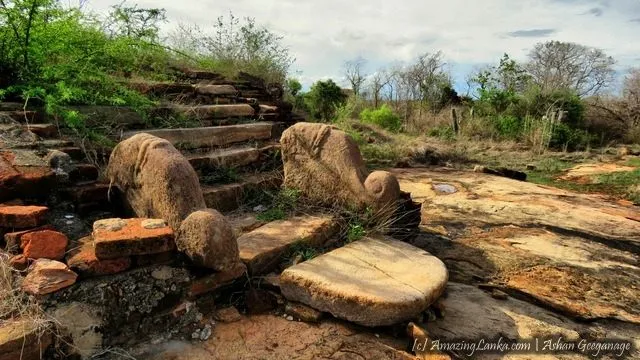
Disclaimer: Image sourced via Google Images. All rights belong to the respective copyright holders. If you are the owner of this image and would like it removed or properly credited, please contact us.
- In Sri Lanka, certain highlands in the dry zone (with iron-rich soil and reddish terrain) fit this description.
- No major Indian monastery matches this precise term.
7. Fa-Hien Cave in Sri Lanka (Pahiyangala) A massive prehistoric cave in Sri Lanka is known as Fa-Hien Cave (Pahiyangala) — traditionally believed to have been visited by Faxian.
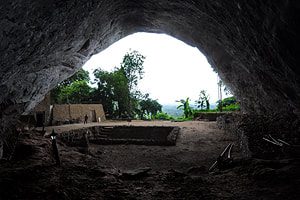
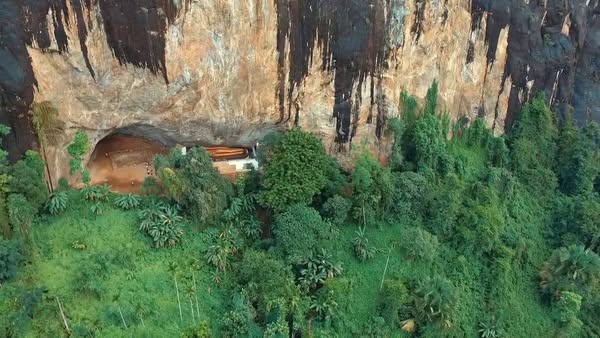
Disclaimer: Image sourced via Google Images. All rights belong to the respective copyright holders. If you are the owner of this image and would like it removed or properly credited, please contact us.
- There is no such cave or site in India bearing his name.
- This supports the idea that his legacy remained stronger in Sri Lanka.
8. Quote Comparisons and Map Alignments
| Faxian’s Description | Sri Lankan Site | Reason for Match |
|---|---|---|
| Crossed sea to reach Damadiva | Sri Lanka | Island geography |
| Stupa with hair relic near sea and hill | Thiriyaya | Exact match |
| Nine sangaramas with tooth relic | Abhayagiri + others | Known Sri Lankan tradition |
| Copper-colored mountain monastery | Sembu Male area | Geology match |
| Sea north of a mountain | Trinco/Pachina Kanda | Directional match |
| Land of Sinhalas | Sri Lanka | Name match |
| Fa-Hien Cave | Pahiyangala | Cultural memory |
9. What Scholars Are Saying Modern scholars increasingly support the idea that Faxian’s geography has been misinterpreted:
- Ancient translators may have lumped Buddhist regions under the name “India.”
- Chinese records clearly distinguish the island of the Sinhalas (Sri Lanka) from mainland kingdoms.
- The focus on relics, rituals, and monastic richness matches Sri Lankan Buddhism far more than Indian practices of the same era.
10. Scholarly Sources & Supporting References
- James Legge — A Record of Buddhist Kingdoms (1886)
- Translation of Faxian’s original text; confirms travel to Sri Lanka.
- Internet Archive
- Dr. Hema Goonatilake — Journal of the Royal Asiatic Society of Sri Lanka
- Explains how Chinese monks viewed Sri Lanka as a center for Buddhist study and relics.
- Dr. Mahinda Palihawadana — Buddhist Ceremonial Life in Ancient Lanka
- Aligns geographical and ceremonial clues with Sri Lankan Buddhist traditions.
- R.A.L.H. Gunawardana — Robe and Plough
- Links Faxian’s hair relic stupa to Girihandu Seya via inscriptions and archaeology.
- Wilhelm Geiger — The Mahavamsa (1912)
- Provides supporting accounts of the tooth relic in Sri Lanka.
- ResearchGate Study — “A Critical Study on Unique Contribution of Venerable Fa-Hsien and Xuanzang to Find the Ancient History of Sri Lanka”
Conclusion: Time to Rethink Faxian’s Journey? The evidence is mounting: many of Faxian’s key experiences match Sri Lankan geography and tradition far better than India. From the sacred stupa at Girihandu Seya to the grand relic processions of Abhayagiri, his descriptions resonate deeply with Lankan heritage.
This doesn’t mean Faxian never visited India—but it does suggest that his most profound experiences may have occurred on the island long overlooked in mainstream Buddhist historiography.
Final Thought: Could the truth of Faxian’s journey change how we understand the spread of Buddhism in Asia?
Let’s keep questioning, researching—and walking the ancient paths of truth.
